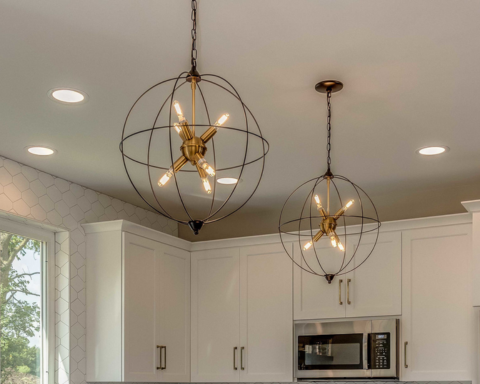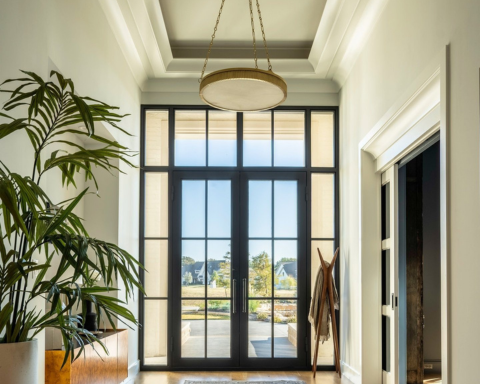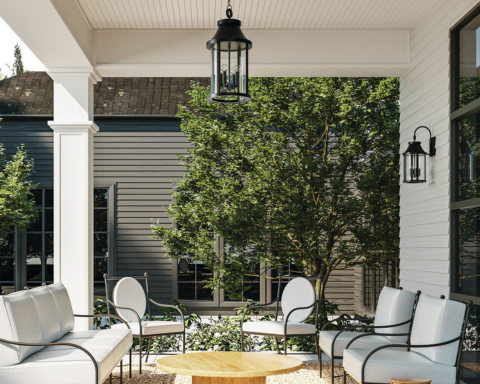Free Ground Shipping on Orders Over $49 Details & Exclusions Excludes Curb Side Delivery (LTL). Lower 48 United States Only. • NEW! Shop The Spring Lookbook
Mar 12, 2013
How to Pick Perfect Pendant Lights
 Looking to transform your space? Don’t want to spend a fortune or have construction crews track dirt through your house? Don’t worry! You don’t have to tear down walls or rearrange the furniture to make a statement. In most cases, reworking the lighting is all it will take to transform a room from drab to fab.
Looking to transform your space? Don’t want to spend a fortune or have construction crews track dirt through your house? Don’t worry! You don’t have to tear down walls or rearrange the furniture to make a statement. In most cases, reworking the lighting is all it will take to transform a room from drab to fab.
“When people go into model homes and see what’s in – the high ceilings, angled walls and dramatic lighting – they want to recreate those looks in their own homes, but run into limitations. Unless they’re willing to spend a lot of money on renovations, they can’t do anything about the shape of the room, but decorative lighting can be used to transform the space and create a sense of style anywhere,”
-Joe Rey-Barreau, (American Lighting Association, professor of interior design at the University of Kentucky.)
 Rey-Barreau travels the country tracking upcoming lighting trends, and believes one of the reasons decorative lighting has become so popular in the past two or three years is because it allows you to easily add a modern touch to any room without having to make expensive upgrades or rennovations.
Rey-Barreau travels the country tracking upcoming lighting trends, and believes one of the reasons decorative lighting has become so popular in the past two or three years is because it allows you to easily add a modern touch to any room without having to make expensive upgrades or rennovations.
“When you think of a pendant, the image that comes to mind is probably a small, obscure fixture hanging from the ceiling to light a specific area, but these days they are anything but obscure,” says Rey-Barreau. “They are fashion statements.”
Pendants are available in all shapes, sizes and looks ranging from traditional to eclectic, and pendant lights offer a simple way to express your style and taste through lighting.
Pendant lights come in all sorts of colors and compositions. The different ways you can display them are equally as diverse. “A lot of people are putting up not one, but two, three or even four pendants in a circle or row to emphasize a space,” says Rey-Barreau. “Some people hang each of them from single channel fixtures. I’ve also seen them displayed on tracks.”
 One area that can quickly benefit from a “pendant lighting facelift” is the kitchen. Proper lighting is a pretty good idea in a room with sharp knives, boiling water and midnight snacks. Transforming a kitchen can take several weeks and thousands of dollars. Adding a pendant or two (or three) can turn that room right around.
One area that can quickly benefit from a “pendant lighting facelift” is the kitchen. Proper lighting is a pretty good idea in a room with sharp knives, boiling water and midnight snacks. Transforming a kitchen can take several weeks and thousands of dollars. Adding a pendant or two (or three) can turn that room right around.
This step-by-step design guide will help you choose the perfect pendant for your space:
- Evaluate your space to see where pendant lights work best:
- Over the central island: More than just a workstation or service area, the kitchen island is a unifying design element, and superb illumination is paramount to extending its utility.
- Over the dining table: Elegant mini pendant lights provide a unique alternative to the chandelier.
- At the sink or work station: A more decorative option to the recessed fixture, mini pendant lighting offers focused task illumination.
- Determine how many pendant lights are needed:
- Place one pendant light for every two feet of counter space. For example, a six-foot counter or island requires three pendants – one in the center with another 20 inches on each side.
- Usually, an odd number of pendants over a counter or island create better balance. Size also matters when determining spacing and amount of pendants. Thin, narrow pendants may look better with the addition of one or two extra fixtures.
- Install with precision:
- Kitchen pendant lighting over an island should be installed so that the bottom of the shade hangs about 28-36 inches above the surface to allow for a clear view across the room from persons both seated and standing.
- In general, kitchen pendant lighting should hang about 66 inches above the floor. If the shades are not very deep and there is seating at the island or peninsula, pendants may hang a few inches lower at about 60 inches above the floor.
- Individual adjustments may be made according to a person’s height. When hanging pendants over a smaller work area, such as the kitchen sink, fixtures should be installed high enough to allow freedom of movement, yet low enough to eliminate glare from the bulb.
- Enjoy your kitchen illumination to the max:
- Lighting should not only beautify your environment, but also be durable, energy-efficient and eco-friendly. Take advantage of new LED (light emitting diode) and CFL (compact fluorescent) compatible designs when updating your kitchen.
Don’t forget the dimmers! Pendant lighting provides plentiful task illumination, but dimmers allow light adjustments for a more subdued glow conducive to quiet dining and intimate social gatherings.
Well, that does it. Now that you’re a perfect pendant picking expert, we want to see your work in action!
- Remodeling a room? We want to see it.
- Transforming your kitchen with the advice in this guide? Let us know.
Please email us with your design photos, suggestions for future style guides or questions you’d like to see answered in future articles at newsletter@1800lighting.com.
Thanks and until next time!



